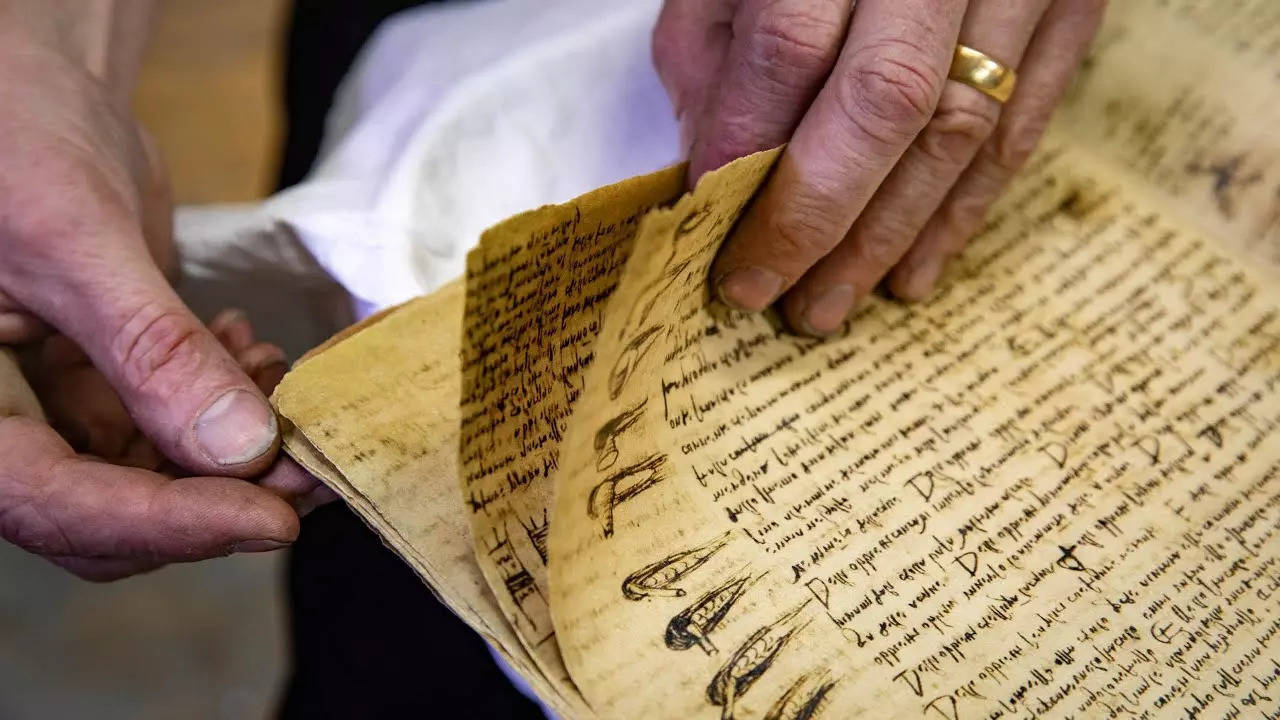Table of Contents

Leonardo da Vinci is a name synonymous with genius. Known for his incredible artistic masterpieces like the 'Mona Lisa' and 'The Last Supper', da Vinci was also a visionary in the fields of science and engineering. While his art is often celebrated, it’s his scientific writings that have set records in the world of books. The 'Codex Leicester', a 16th-century manuscript penned by da Vinci, holds the title of the world’s most expensive book, purchased for a staggering $30.8 million. But what makes this manuscript so valuable, and why is it considered a priceless piece of history?
Also Read: Rare Manuscript of The Little Prince Set for Auction
What is the Codex Leicester?
The 'Codex Leicester' is a collection of scientific writings and observations created by Leonardo da Vinci between 1506 and 1510. This manuscript, sometimes referred to as the 'Codex Hammer', is named after Thomas Coke, the Earl of Leicester, who acquired it in 1717. The codex consists of 72 pages filled with da Vinci’s thoughts, notes, sketches, and diagrams on a range of topics. These include the properties of water, the movement of light, the structure of the Earth, and the nature of the cosmos.
Da Vinci's distinctive "mirror writing," where he wrote from right to left, is present throughout the manuscript. This style of writing has long fascinated scholars, who have debated whether it was a method of secrecy or simply da Vinci’s natural writing technique, given that he was left-handed.
Why is the Codex Leicester So Valuable?
The value of the 'Codex Leicester' lies in its uniqueness. It provides a rare window into the mind of one of history’s greatest thinkers. Da Vinci’s observations in the codex showcase his incredible curiosity about the natural world and his forward-thinking approach to science. The manuscript includes discussions on water flow, the formation of rocks, and even the reflections of light—topics that were groundbreaking at the time.
Da Vinci’s notes on water, for example, demonstrate his understanding of the behaviour of rivers, tides, and erosion. He theorized that fossils found on mountains were evidence of the shifting of land masses, a concept that foreshadowed modern geological studies. His musings on light, including the refraction and diffusion of beams, reveal a mind grappling with the complexities of physics long before many scientific principles were formally established.
In essence, the 'Codex Leicester' is not just a historical document; it is a testimony to da Vinci’s boundless intellect and his ability to bridge the gap between art and science. The sketches and diagrams that accompany his writings give insight into his thought process, showing the methodical way he approached the mysteries of the universe.
The Record-Breaking Sale
In 1994, Microsoft co-founder Bill Gates purchased the 'Codex Leicester' for $30.8 million, making it the most expensive book in the world. The purchase set a record for the highest price ever paid for a book at auction—a record it holds to this day. Gates, known for his interest in technology and innovation, saw the codex as more than just a historical artefact. It was, to him, a celebration of human curiosity and the pursuit of knowledge.
After acquiring the manuscript, Gates had it digitized, making portions of the codex available for viewing by the public through interactive media. This act of sharing da Vinci’s work with the world aligns with the tech mogul’s belief in the importance of accessible knowledge.
A Piece of Living History
The 'Codex Leicester' is not only valuable for its content but also for its journey through history. From its creation by da Vinci in the early 1500s, to its acquisition by Thomas Coke, and later by Bill Gates, the manuscript has passed through the hands of scholars, collectors, and innovators. Each new owner has played a role in preserving and sharing da Vinci’s legacy with the world.
In 2019, to honour the 500th anniversary of Leonardo da Vinci’s death, the 'Codex Leicester' was displayed at the Uffizi Gallery in Florence, Italy. This exhibition celebrated da Vinci’s contributions to science, art, and human thought, highlighting the manuscript’s importance in both the scientific and artistic communities.
Why the Codex Leicester Matters Today
The 'Codex Leicester' remains a testament to the power of human curiosity. Da Vinci’s ability to see the world not just as an artist but as a scientist continues to inspire people today. His work in the codex reflects a timeless truth—that the pursuit of knowledge, no matter how small or grand, is a worthy endeavour.
In a world where technology and science advance at rapid speeds, da Vinci’s observations remind us of the importance of questioning the world around us and seeking answers through creativity and curiosity. The 'Codex Leicester' is more than just the most expensive book ever sold; it is a symbol of the human drive to explore, understand, and innovate.
Read More: The Forgotten Bestseller: The Book That Once Defined a Generation
Leonardo da Vinci’s 'Codex Leicester' is a masterpiece of scientific thought, bridging art and science in a way that only da Vinci could. Its record-breaking price reflects not only its rarity but also its enduring significance. Through its pages, da Vinci’s legacy lives on, inspiring generations to pursue knowledge and look at the world with curiosity and wonder.

